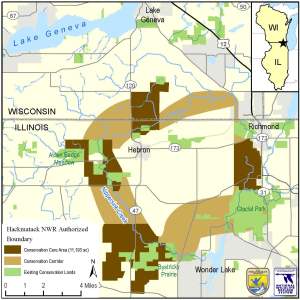Dear Midwest Generation:
I admit it. For a long time I’ve assumed that you were nothing but a bureaucratic, ethics-challenged, profit-obsessed energy company. But your recent pleas to the Illinois Pollution Control Board for sympathy and understanding regarding your supposedly tardy efforts at environmental compliance have truly touched my heart.

After all, you’ve owned the coal-burning Joliet and Romeoville power stations since 1999, which practically feels like yesterday. That’s hardly time enough to implement industry standard pollution-control upgrades as dictated by the Clean Air Act, Clean Water Act, and other annoying environmental laws written by people overly fixated on sulfur dioxide emissions or airborne particulate matter.
Burning coal generates electricity for us, which we love, and quite a bit of money for you, which you need. Hey, power company executives gotta eat, too, don’t they? After all, electricity production isn’t a charity endeavor — that would be (gasp!) socialism.

But making a profit in your business is tough these days, what with your outdated and inefficient power plants in Will County spewing so many pollutants that require “scrubbing” and various “mitigations.” Some of your chief critics — like Citizens Against Ruining the Environment, the Sierra Club, and the Illinois Attorney General’s office — don’t get that. They just keep whining that your coal plants are old and dirty and unhealthy.
C’mon, already. A little dirt never hurt anyone, except maybe a few finicky armchair environmentalists. You don’t hear the tens of thousands of working class and minority citizens living downwind of your coal plants complaining, do you? And is it really such a big a deal that you haven’t figured out what to do with those toxic coal ash waste piles you’re adding to on a daily basis?
 I would remind people that you did a pretty nice thing last year when you closed those two legitimately old coal-fired power plants on Chicago’s Southwest Side — the Fisk (built in 1903) and Crawford (1924) stations. For most of thirteen years after you bought them, you studiously ignored longstanding protests by neighborhood environmental watchdogs, ultra-liberal aldermen, and grandstanding green organizations. But once you finally determined that those old-timer plants weren’t going to turn a profit anymore if you installed their required upgrades, you quickly and decisively shut them down.
I would remind people that you did a pretty nice thing last year when you closed those two legitimately old coal-fired power plants on Chicago’s Southwest Side — the Fisk (built in 1903) and Crawford (1924) stations. For most of thirteen years after you bought them, you studiously ignored longstanding protests by neighborhood environmental watchdogs, ultra-liberal aldermen, and grandstanding green organizations. But once you finally determined that those old-timer plants weren’t going to turn a profit anymore if you installed their required upgrades, you quickly and decisively shut them down.
That was brave. So was letting all those Fisk and Crawford plant workers go. That’s why I’m sure that if and when the time comes to “release” the workers from your barely middle-aged Joliet station (which currently emits far more pollution than those old Fisk and Crawford plants combined), you’ll find a way to pull the trigger.
As for eventually complying with these new environmental regulations on sulfur dioxide? I’m grateful for your promise to get to it some year.
So shame on those ladies from CARE and those Sierra Club treehuggers and Pollution Board pencil pushers for badgering you with complaints, lawsuits, op-ed articles, scientific studies, mortality statistics, medical expense projections, probing questions, and other distractions. I wish they’d give a chronic and habitual polluter like you some credit for trying to reform itself. It’s obvious you’re trying, really trying.
Heck, by 2025 or so I’m sure you’ll have our Joliet smokestacks clean as a whistle.
I live in Joliet, about three miles as the smoke drifts from the Joliet 29 Generating Station on Route 6 operated by Midwest Generation since 1999. This is a revised version of my monthly op-ed column for the Joliet Herald-News. Check the Illinois Pollution Control Board’s website to learn how the regulatory process works and for information on Midwest Generation’s appeal for more compliance time as well as other pending issues.












